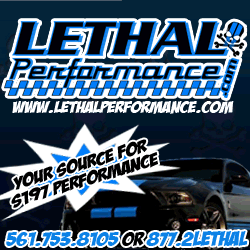claudermilk
Senior Member
Pulling the most pertinent bits from the linked post:
Just saw the car in person yesterday (love it when a plan comes together--hit the show at opening & was one of the first half-dozen to it's stand, so no crowd to fight). I really like the visual changes, this is easily the best looking S550, particularly in the front. While the splitter could use a bit more work to clean up, the widened fenders fix my main gripe--it no longer makes me think of Marty Feldman looking at those headlights.
Finally decent shoes on it: PSS 305 rear, 295 front. The brakes look darn impressive, and the rears are two-piece rotors like the front, just a bit smaller diameter.
TRANSMISSION:
Q: Tell us a little about the transmission.
A: It’s a Tremec 3160 transmission that’s been modified fairly significantly to cope with the demands of the flat plane crank engine.
Q: What about the fly wheel and the clutch?
A: It’s got a low inertial dual mass flywheel and two 15-mm dual disc clutch.
WHEELS/BRAKES:
Q: Why black wheels?
A: Actually there’s a reason for that. The brake pads we use, they create so much dust and customers just hate it. You drive the car once with clean wheels and they are dirty after a short drive. So that’s why we got dark wheels.
Q: Why no carbon ceramic brakes?
A: I think you’ll find out later that affordability was a big part of this car.
Q: So keeping price down was a big part of that?
A: Yes. That was a priority with this car.
Just saw the car in person yesterday (love it when a plan comes together--hit the show at opening & was one of the first half-dozen to it's stand, so no crowd to fight). I really like the visual changes, this is easily the best looking S550, particularly in the front. While the splitter could use a bit more work to clean up, the widened fenders fix my main gripe--it no longer makes me think of Marty Feldman looking at those headlights.
Finally decent shoes on it: PSS 305 rear, 295 front. The brakes look darn impressive, and the rears are two-piece rotors like the front, just a bit smaller diameter.




